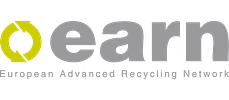WEEE Directive (WEEE Directive – 2012/19/EU)
WEEE Directive means the Directive 2012/19/EU of the European Parliament and of the Council of 4 July 2012 on waste electrical and electronic equipment (WEEE) replacing Directive 2002/96/EC of the European Parliament and of the Council of 27 January 2003 on waste electrical and electronic equipment (WEEE). In support of the fifth environmental action program of the EU this Directive was passed to support reducing wasteful consumption of natural resources and help prevent pollution.
Objectives of the WEEE Directive
Part of this Directive is the waste hierarchy according to which waste has to be treated:
- prevention of WEEE
- re-use, recycling and other forms of recovery of such wastes so as to reduce waste quantities
- safe disposal of waste
This directive aims to contribute to sustainability with the efficient use of resources and the retrieval of valuable secondary raw materials. It also defines minimum collection rates as well as recovery quota. The Directive is the basis for and was transposed into individual country regulations in each EU member state.
One of the main principles of the Directive is the concept of producer responsibility. This means that each producer is responsible for financing the management of the waste from his own products. The producer can choose to do this individually or by joining a collective scheme.
Is your company affected by the WEEE Directive?
A producer according to the Directive is any natural or legal person that first places on the market EEE products in a EU member state. This can be the manufacturer of the products but also a distributor irrespective of being established in a certain EU member state or distributing the EEE products from another EU member state or a third country. If a company with its products is affected by the WEEE Directive is depending on the characteristics oft he products and the case of use.








